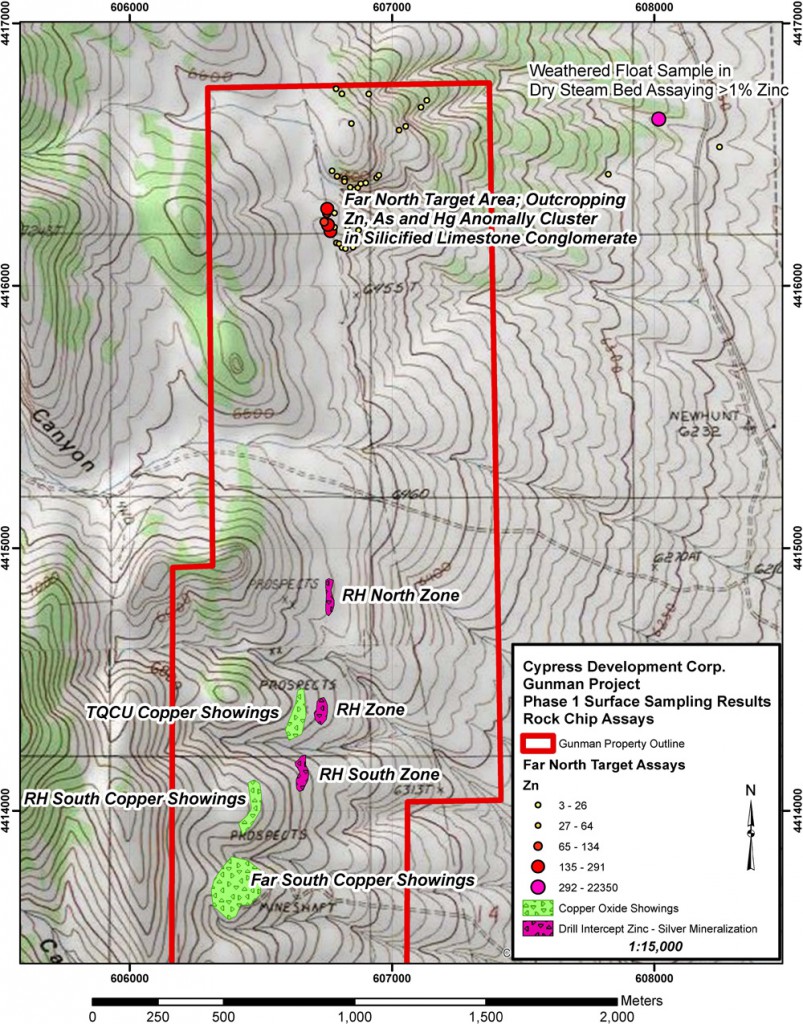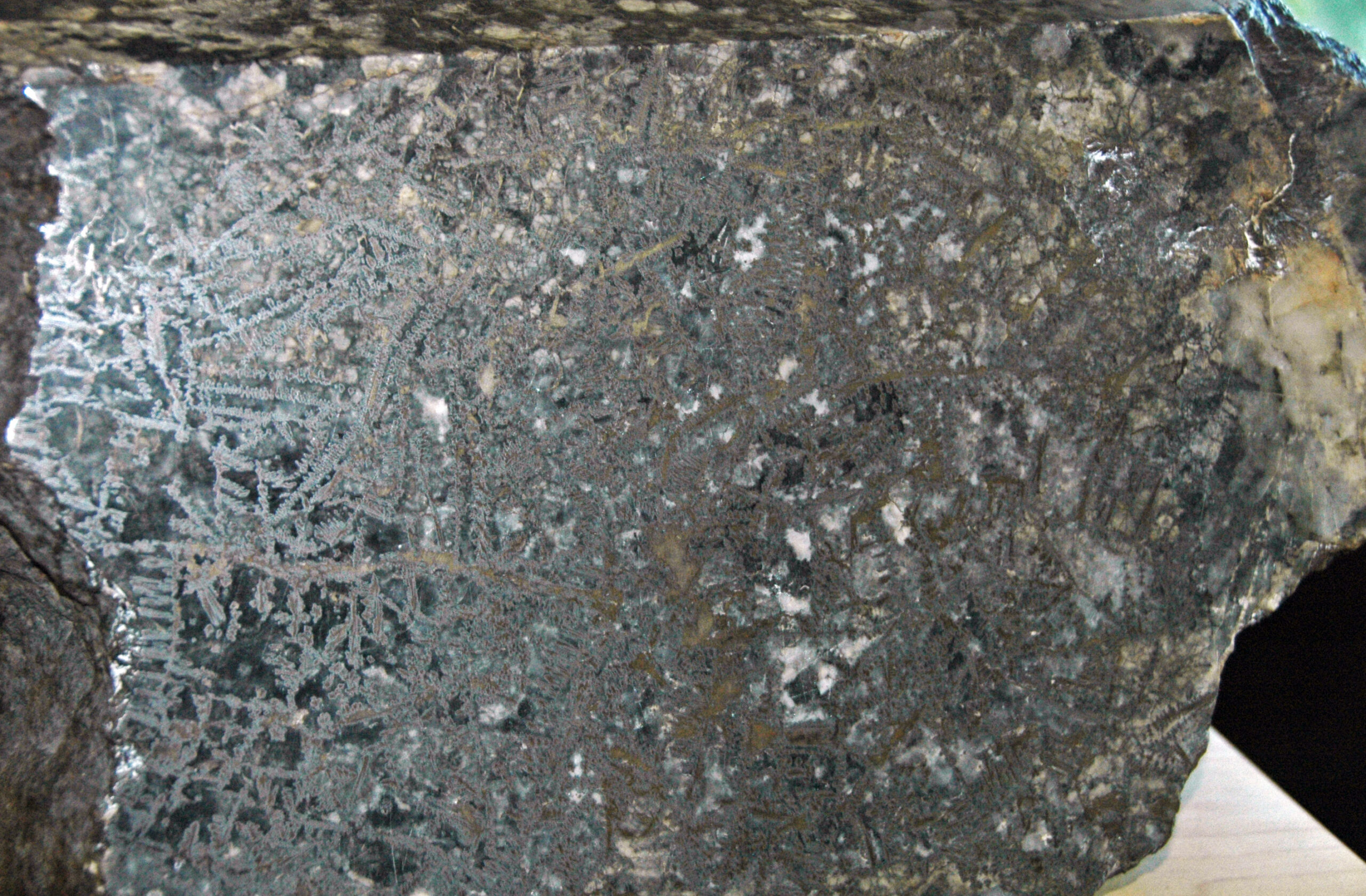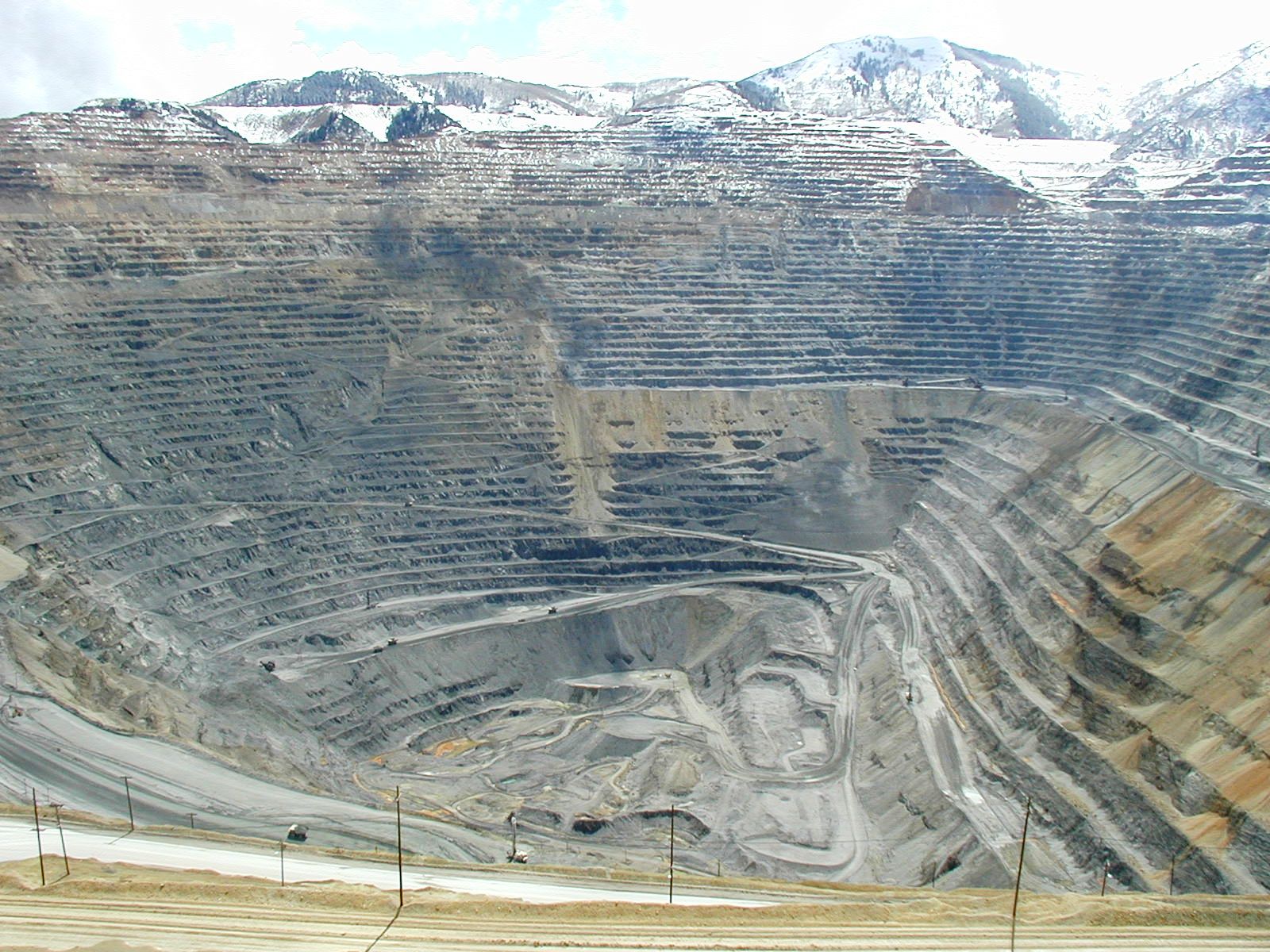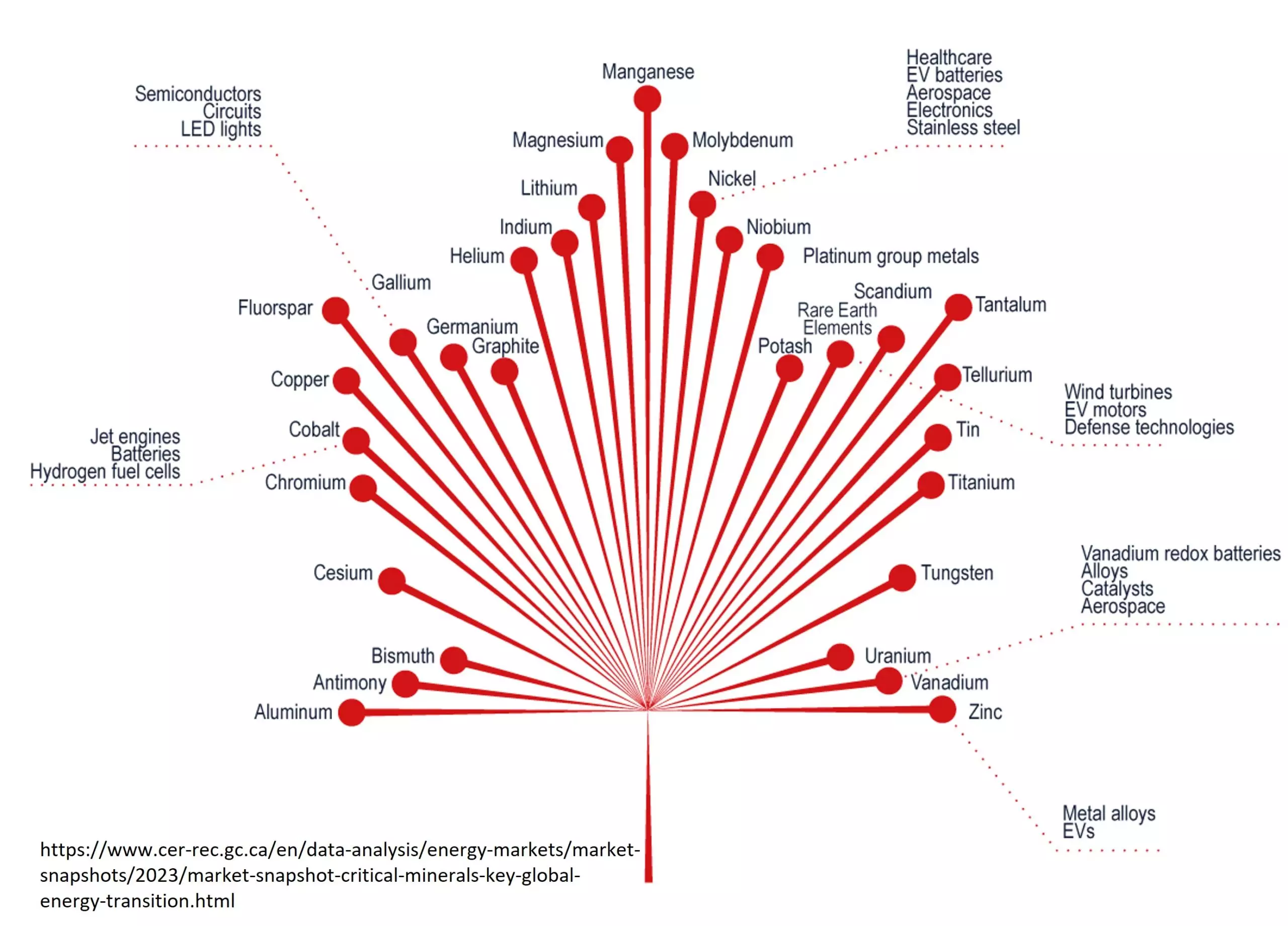The price of zinc has been fairly stable over the last 5 years at $0.80-$1.10 per lb. So for Cypress Development Corp, the Gunman property may appear to be a safer bet for the time being.
Vancouver, BC – Cypress Development Corp. (TSX-V: CYP) (OTC Pink: CYDVF) (Frankfurt:C1Z) (“Cypress” or the “Company”) is pleased to announce results of a drill program completed as part of the 2014 Phase 1 exploration program at its 100% owned Gunman zinc-silver oxide project in Nevada. The 1140 acre Gunman zinc-silver project is located directly west of Barrick’s Bald Mountain gold mine complex on the southern Carlin mineral trend in White Pine County, Nevada.

Thirteen reverse circulation (RC) drill holes were completed at the Gunman zinc-silver-copper project in eastern White Pine County, Nevada. The drilling program totaled 3520 feet and was directed at three targets areas located in the central portion of the property.
[box type=”note” align=”aligncenter” ]RC drilling is a useful tool for determining the extent of mineralization for the near-surface prospects. It’s quick and highly cost effective compared to diamond drilling. [/box]
RH Zone Results
Infill and confirmation drilling within the RH Zone intersected long intervals of strong dolomitic alteration containing abundant gossanous iron oxide zones. Assays from five foot interval samples within the oxide zone and adjacent fractured dolomitized limestone show spectacular zinc and silver mineralization. The assays from the drilling within the RH Zone are summarized in table 1 below.
Table 1: RH Zone Zinc and Silver Assay Results
|
Hole ID
|
From (ft)
|
To (ft)
|
Interval (ft)
|
Ag (g/t)
|
Zn (%)
|
|---|---|---|---|---|---|
|
GMRC-3
|
55
|
95
|
40
|
60.3
|
2.00
|
|
and
|
140
|
155
|
15
|
33.5
|
3.20
|
|
GMRC-4
|
20
|
175
|
155
|
128.0
|
7.20
|
|
including
|
125
|
175
|
50
|
87.7
|
17.09
|
|
including
|
135
|
150
|
15
|
83.9
|
30.64
|
|
GMRC-5
|
5
|
205
|
200
|
63.3
|
8.90
|
|
including
|
125
|
180
|
55
|
147.0
|
21.00
|
|
including
|
150
|
165
|
15
|
100.1
|
32.20
|
|
GMRC-8
|
130
|
185
|
55
|
54.3
|
6.50
|
|
GMRC-9
|
50
|
225
|
175
|
121.0
|
12.00
|
|
including
|
130
|
215
|
85
|
209.2
|
19.70
|
|
GMRC-10
|
55
|
80
|
25
|
24.2
|
4.60
|
|
and
|
105
|
120
|
15
|
8.0
|
1.70
|
|
and
|
140
|
155
|
15
|
5.9
|
1.20
|
|
and
|
170
|
220
|
50
|
20.3
|
8.70
|
|
GMRC-11
|
0
|
150
|
150
|
18.3
|
3.10
|
|
and
|
165
|
215
|
50
|
125.6
|
7.90
|
* All intervals above were computed from Chemex assay results of representative, 5 foot interval samples collected from the reverse circulation sample return. All intervals have been selected based on a 1% zinc lower cut-off. The intervals above are restricted to contain no more than one included interval that falls below the 1% zinc lower cut-off. No high grade cut has been applied. All samples were continuously collected from each 5 foot interval during drilling. The samples are large and average approximately 6 kilograms in weight.
* g/t = grams per metric tonne.
* The true width lengths are estimated to be approximately 65%-75% of down hole intervals.
[box type=”note” align=”aligncenter” ]
Drilling has intersected zones of “dolomitization” and “gossanous iron oxides” which are associated with silver and zinc mineralization. Both of these alteration zones suggest that fluid interactions have influenced the mineralization.
Dolomitization is an alteration process where the calcite in limestone is replaced by the mineral dolomite (calcium-magnesium carbonate). Since dolomite has a more compact crystal structure, this alteration results in the creation of pore-spaces in the rock. Depending on the geological setting, porous rock like this can be very useful economically: It can serve as traps for petroleum reserves, or deposit locations for metal-bearing fluids. Many of the world’s lead-zinc-silver deposits are hosted in similar rock types.
A “gossanous iron-oxide zone” is essentially reddish iron-stained rock. Iron bearing sulfide minerals such as pyrite will break down into iron oxides when exposed to oxygen and water in near-surface settings. The results in the “rusting” of the rock and the resulting reddish-brown staining.
These results only represent drill intercepts and do not reflect the true thickness of the mineralization.
[/box]
As the table above indicates, zinc and silver mineralization occurs both as long, highly variable but completely continuous mineralized down hole intervals (Hole GMRC-9 for example) as well as holes with shorter intervals of strong mineralization separated by lower grade intervals (Hole GMRC-10 for example).
Note that, as Table 2 below indicates, for hole GMRC-9, the entire 175 foot down hole interval that grades 121.0 g/t silver and 12.00% zinc does not contain a single interval grading less than 1% zinc.
Table 2: Complete 5 Foot Interval Assays for a portion of Hole GMRC-9
|
Hole ID
|
From(ft)
|
To(ft)
|
sample weight (kg)
|
Ag g/t
|
Zn %
|
|---|---|---|---|---|---|
|
GMRC-9
|
50
|
55
|
4.12
|
26.1
|
5.19
|
|
GMRC-9
|
55
|
60
|
9.86
|
9.3
|
3.17
|
|
GMRC-9
|
60
|
65
|
9.44
|
16.9
|
2.65
|
|
GMRC-9
|
65
|
70
|
11.40
|
13.3
|
5.92
|
|
GMRC-9
|
70
|
75
|
8.54
|
13.6
|
2.09
|
|
GMRC-9
|
75
|
80
|
9.76
|
16.7
|
3.51
|
|
GMRC-9
|
80
|
85
|
4.24
|
45.5
|
6.40
|
|
GMRC-9
|
85
|
90
|
9.34
|
33.9
|
6.42
|
|
GMRC-9
|
90
|
95
|
8.04
|
31.0
|
3.76
|
|
GMRC-9
|
95
|
100
|
16.08
|
20.4
|
1.84
|
|
GMRC-9
|
100
|
105
|
7.30
|
82.8
|
8.49
|
|
GMRC-9
|
105
|
110
|
13.60
|
35.0
|
3.20
|
|
GMRC-9
|
110
|
115
|
5.50
|
45.3
|
7.19
|
|
GMRC-9
|
115
|
120
|
7.52
|
63.2
|
9.29
|
|
GMRC-9
|
120
|
125
|
5.04
|
30.1
|
2.51
|
|
GMRC-9
|
125
|
130
|
10.02
|
124.0
|
9.03
|
|
GMRC-9
|
130
|
135
|
5.04
|
154.0
|
22.10
|
|
GMRC-9
|
135
|
140
|
8.34
|
146.0
|
25.60
|
|
GMRC-9
|
140
|
145
|
5.52
|
299.0
|
36.30
|
|
GMRC-9
|
145
|
150
|
9.42
|
156.0
|
27.90
|
|
GMRC-9
|
150
|
155
|
3.52
|
92.7
|
16.80
|
|
GMRC-9
|
155
|
160
|
11.14
|
54.3
|
3.91
|
|
GMRC-9
|
160
|
165
|
5.90
|
70.4
|
3.37
|
|
GMRC-9
|
165
|
170
|
9.26
|
143.0
|
5.93
|
|
GMRC-9
|
170
|
175
|
6.04
|
327.0
|
14.85
|
|
GMRC-9
|
175
|
180
|
8.30
|
371.0
|
15.55
|
|
GMRC-9
|
180
|
185
|
4.26
|
345.0
|
22.30
|
|
GMRC-9
|
185
|
190
|
9.46
|
192.0
|
16.90
|
|
GMRC-9
|
190
|
195
|
5.18
|
272.0
|
24.10
|
|
GMRC-9
|
195
|
200
|
7.42
|
379.0
|
27.90
|
|
GMRC-9
|
200
|
205
|
4.32
|
276.0
|
22.80
|
|
GMRC-9
|
205
|
210
|
10.30
|
231.0
|
33.21
|
|
GMRC-9
|
210
|
215
|
6.12
|
49.1
|
15.45
|
|
GMRC-9
|
215
|
220
|
9.44
|
50.3
|
2.91
|
|
GMRC-9
|
220
|
225
|
4.18
|
24.8
|
1.09
|
* Detailed Notes on Chemex Assay Procedures Used: A basic aqua regia-ICP multi-element package was run on 50 gram splits from 250 gram master pulps. Intervals assaying >100 grams/tonne silver and/or 1% zinc were rerun using a complete aqua regia digestion followed by ICP-AES analysis. Intervals assaying greater than 30% zinc following complete aqua regia digestion were then re-assayed from a fresh 50 gram pulp using classical titration methods.
RH Zone Geologic Discussion
Evidence from both drilling and surface exposures of the RH Zone strongly suggests that the mineralization is structurally controlled and is focused within an envelope of hydrothermally altered, fractured and brecciated dolomite. Outcrop and drill data also indicate that the dolomite is of hydrothermal origin.
[box type=”note” align=”aligncenter” ]
Based on a 43-101 compliant technical report the company filed with SEDAR on March 20th, 2014, the company has classified the prospect as an epithermal style deposit. Epithermal deposits are typically high grade low tonnage vein-type deposits. The mineralization is also believed to be structurally controlled. The drill results appear to support the idea that the mineralization is structurally controlled since the mineralization is associated with potential fluid flow channels.
[/box]
Data gathered during the 2014 Phase 1 drill program points strongly to base metal, precious metal veining within a focused zone of dolomite alteration, fracturing and brecciation forming within an active zone of faulting. Subsequent oxidation of the original poly metallic veining mineralization has produced significant down hole intervals of spectacular, silver rich, zinc and iron oxide gossans with local sulfide cast boxworks.
[box type=”note” align=”aligncenter” ]
“Boxwork” is a geological term used to describe a “honeycomb” like texture in the rock. Mechanical and chemical weathering can cause different effects on rocks composed of multiple elements. Here the weathering process has a greater effect on the rock surrounding the veins. During the weathering process, sulfide veins aren’t easily eroded, forming a “wall”, much like the walls of a honeycomb.
[/box]
RH North Target Results and Geologic Discussion
Four holes were completed in the grass roots exploration stage RH North target area in the Phase 1 2014 program. Three of the holes were completed on 90 to 300 foot step outs from the RH North discovery hole GD-15, which was completed in 2007. Hole GMRC-2 intersected an 80 foot wide interval of low grade zinc and silver mineralization. A five foot interval within the low grade intersection returned 1.28% zinc and 6.6 g/t silver. Hole GMRC-2 assays show that the hole was still in low grade mineralization with the last assay interval from 295 to 300 feet returning 7.1 g/t silver and 0.29% zinc.
The exploration of the RH North target area remains at a reconnaissance stage as only seven holes have been completed to date. Low grade (<1% zinc and 10 g/t silver) mineralization has been encountered in two of the seven holes. Both of the broadly mineralized holes also contain narrow intervals of zinc mineralization of >1%. The host rocks at the RH North target area are very similar to those at the RH Zone, located 1500 feet to the south.
Results to date indicate significant down hole intervals of mineralization in both oxidized and reduced limestone is present in the target area. This setting is considered highly favorable for the presence of much higher grade mineralization. Geologic compilation of results is under way in an effort to identify additional drill targets at the RH North target area.
Far North Target Area Surface Sampling Results Interpretation
As has been recently reported, Cypress completed a reconnaissance surface rock chip sampling program in the far northern portion of the Gunman project early on in the Phase 1 2014 exploration. The assay results of the sampling have been previously reported (see news release June 4, 2014).
Two important results from the ICP assays of these samples are:
- A sample of bleached, weathered float collected in a dry stream bed 2000 feet east of the Gunman property boundary assayed 22350 ppm zinc or 2.235% zinc. The stream bed drains from an area of hills within the Far North Target area on the Gunman property.
- A cluster of outcrop samples of silicified and strongly oxidized limestone conglomerate contain highly anomalous zinc, arsenic and mercury. Scattered bismuth anomalies also occur in samples from the anomaly area. This anomaly cluster lies in the Far North Target area and is hosted by the limestone conglomerate unit which caps the strongly mineralized sandy dolomite and limestone in the RH area.
[box type=”note” align=”aligncenter” ]
Not all deposits are discovered from the first drill hole put into the ground and at the RH North Prospect results have been less impressive. Still, the assay values did show some low grade mineralization which should be followed up on.
At the Far North target area, their efforts are more grass-roots and involve surface rock sampling and mapping, as well as stream bed sampling. Current or past river systems can cut through areas of mineralization and transport the material to a new location. Geologists can sample past stream beds to determine which direction a mineralized sample came from. Some epithermal deposits are known to have bismuth anomalies which may be associated with gold mineralization.
[/box]
The results show strong evidence for the continuation of the known, structurally controlled mineralization at Gunman. The outcropping silicified and geochemically anomalous carbonates are located approximately 6000 feet north of the RH Zone. No previous exploration or drilling is known to have been conducted in this area.
A strong case for a structural connection between the RH Zone and the Far North anomaly area can be made from strong, linear features seen in contoured topographic data as well as in detailed digital elevation data. The host rock for the anomaly area is definitely the limestone conglomerate that stratigraphically overlies the high grade mineralization at the RH Zone.
These results are very encouraging as they point to a large extension of the known mineralized system at Gunman which now stretches from the Far South Zone, north through the RH South, RH and RH North zones and then further north to the new Far North target area, a total indicated strike length of approximately 9000 feet.
TQCU Copper Target Results
Two shallow angle holes from a common collar were added to the Phase 1 program to conduct initial sub surface exploration of a well-developed copper oxide showing located 300 feet west of the RH Zone. The copper showing has been explored by historical shallow workings. Grab samples from one these pits at TQCU returned very high copper assays as was recently reported (see news release June 4, 2014 “Cypress Samples Up to 10% Copper”).
The TQCU target is one segment of a 2500 to 3000 foot long zone of outcropping copper oxide mineralization hosted in a distinctive coarse grained sandstone unit. This copper mineralization flanks the zinc and silver mineralization delineated at the RH and RH South Zones.
The two holes intersected strongly oxidized sandstone and underlying limestone. It is possible a cross fault has offset the mineralization. Detailed sampling and mapping of the copper mineralization is planned to better define drill targets.
Robert Marvin, P.Geo., CPG, Exploration Manager for Cypress Development Corp. is the Qualified Person as defined by National Instrument 43-101 and has supervised both the project field work and the preparation of the technical information in this release.
[box type=”note” align=”aligncenter” ] The company drilled the property in 2004 and 2007 before moving onto their Red Lake gold properties in 2012. Now that gold prices are less exciting and zinc is considered to be a safe bet for the next few years, the company has refocused on Gunman. The price of zinc has been fairly stable over the last 5 years at $0.80-$1.10 per lb. So for Cypress, the Gunman property may appear to be a safer bet for the time being. As of writing, Cypress Development’s stock is trading at $0.03, close to it’s 52-week high of $0.04. The company has about $1 million in the bank.[/box]
About Cypress Development Corp.:
Cypress Development Corp. is a diversified precious and base metals exploration and development company with properties in Red Lake, Ontario, Canada, and in Nevada, U.S.A. The Company has approximately $1.1 million in its treasury.






